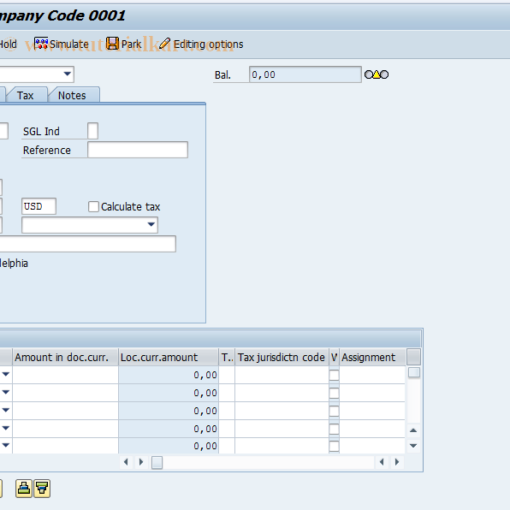Faced with complex Salesforce triggers? Discover TriggerFactory – your key to cleaner, more manageable code. Learn how TriggerFactory in Salesforce Apex works, benefits, and best practices in our comprehensive 2024 Developer Guide…

Frazzled by complex Salesforce triggers? Drowning in a sea of spaghetti code?
There’s a superior way, tired designer! TriggerFactory is here to be your knight in sparkling protection, offering a smoothed out way to deal with trigger turn of events and the board in Salesforce Summit. This amazing asset, a #1 among engineers in the loop, can change your trigger misfortunes into a relic of past times. Prepare to compose cleaner, more viable code, with altogether less pressure. How about we jump into the universe of TriggerFactory and find how it can step up your Pinnacle improvement abilities in the 2024 Salesforce scene!
What is TriggerFactory?
Envision an existence where your Zenith triggers are at this point not an untamed wilderness of code, but instead an efficient nursery, simple to explore and keep up with. This, my companions, is the enchantment of TriggerFactory. It’s anything but a trade for triggers themselves, but instead a strong friend that assists you with composing cleaner, more sensible code.
At its center, TriggerFactory is a plan design, explicitly an Industrial facility Configuration Example. This implies it unifies the rationale for making and overseeing triggers, isolating that rationale from the genuine trigger definition. Think about it like an industrial facility creation line for triggers. You give the natural substances (the rationale you need to execute), and TriggerFactory deals with collecting everything into a useful trigger, fit to be conveyed in your Salesforce organization.
Here’s how this separation brings some serious benefits to your development experience:
- Modular and Reusable Code: By isolating rationale from the trigger definition, TriggerFactory permits you to make reusable parts. This is especially useful for normal functionalities utilized across various triggers. Envision expecting to play out an approval keep an eye on a particular field across five distinct triggers. With TriggerFactory, you can compose that approval rationale once and afterward reference it in every one of the five triggers, keeping your code spotless and DRY (Don’t Rehash the same thing).
- Enhanced Testability: One of the greatest migraines with triggers is unit trying. Since trigger rationale is ordinarily installed straightforwardly inside the trigger definition, testing becomes awkward. TriggerFactory tackles this by permitting you to characterize your trigger rationale in a different, testable class. This implies you can compose unit tests explicitly for that rationale, guaranteeing your code capabilities as planned without the limits of the trigger setting.
Benefits of Using TriggerFactory
At any point felt like you’re investing more energy grappling with complex triggers than creating exquisite arrangements? Lock in, on the grounds that TriggerFactory is going to turn into your new dearest companion. This imaginative instrument offers a plenty of benefits for Salesforce Zenith engineers, smoothing out improvement, upgrading code quality, and making your life a ton simpler. We should plunge into the vital advantages of utilizing TriggerFactory:
Improved Code Maintainability
Imagine an Apex codebase where triggers are concise, focused on specific actions, and devoid of repetitive logic. That’s the beauty of TriggerFactory. Here’s how it elevates code maintainability:
- Modular Design: By separating trigger logic from the trigger definition, TriggerFactory fosters a modular approach. Complex logic gets compartmentalized into reusable components, making your code easier to understand and modify. Need to update a validation check? Simply modify the dedicated validation class, and the change propagates to all triggers referencing it. No more scouring through multiple triggers for buried logic.
- Reduced Duplication: Say goodbye to copy-pasting code snippets across multiple triggers! TriggerFactory enables you to make reusable classes epitomizing normal functionalities. This decreases code size as well as limits the gamble of irregularities. In the event that you really want to change a common rationale part, the fix swells through every single ward trigger, guaranteeing consistency and lessening support above.
How Does TriggerFactory Work?
Prepared to open the force of TriggerFactory and experience a change in outlook in your Peak set off improvement? This segment will outfit you with a bit by bit comprehension of how TriggerFactory works, changing you from an inquisitive spectator into a sure client.
The Core Principle: Separation of Concerns
TriggerFactory relies on the idea of detachment of worries. It isolates the trigger definition (what occasion sets off the code) from the genuine rationale (the code that executes). Here is a breakdown of this detachment:
- Trigger Point of interaction: This point of interaction goes about as an outline for your trigger. It characterizes the techniques that will be conjured in view of the trigger occasion (e.g., before embed, after update). Be that as it may, the connection point itself contains no execution subtleties.
- Trigger Controller Class: This is where the enchantment occurs! The trigger controller class carries out the techniques characterized in the trigger connection point. It houses the genuine rationale you need to execute when the trigger flames. Consider it the motor that drives the trigger.
TriggerFactory overcomes any issues between these two parts. You characterize the trigger connection point and the comparing controller class, and TriggerFactory deals with collecting them into a practical trigger, fit to be sent in your Salesforce organization.
Putting it into Practice: A Code Example
We should harden our comprehension with a useful model. Envision you need to make a trigger that approves the Record Name field at whatever point another record is made (before embed occasion). Here is an improved on representation:
Java
// Trigger Interface (Defines what the trigger does)
public interface AccountTrigger {
void beforeInsert(List<Account> records);
}
// Trigger Handler Class (Contains the logic)
public class AccountTriggerHandler implements AccountTrigger {
@Override
public void beforeInsert(List<Account> records) {
for (Account record : records) {
// Perform validation logic on Account Name
if (String.isBlank(record.Name)) {
throw new DmlException('Account Name cannot be blank!');
}
}
}
}
Use code with caution.content_copy
In this situation, the AccountTrigger interface frames the beforeInsert strategy that will be summoned when another Record is made. The AccountTriggerHandler class executes this strategy and houses the real approval rationale. TriggerFactory would then consolidate these components to make a practical trigger for the Record object.
Best Practices for TriggerFactory: Mastering the Craft
While TriggerFactory unlocks a world of possibilities, it’s essential to leverage it effectively. Here, we’ll explore some key best practices to ensure you reap the maximum benefits and write robust, maintainable triggers:
Embrace Granular Logic Components
TriggerFactory shines when you break down complex logic into smaller, reusable components. Here’s how to get the most out of this approach:
- Significant Class Names: Don’t agree to nonexclusive names like “ValidationUtil.” All things being equal, utilize elucidating names that obviously convey the motivation behind the class (e.g., “AccountRecordNameValidator”). This upgrades code clarity and practicality for you and different designers.
- Targeted Functionality: Center every part around a particular undertaking. For example, make a class for approving Record Names, one more for performing field refreshes on Contact creation, etc. This advances seclusion and makes it more obvious, adjust, and test individual rationale units.
Prioritize Error Handling and Logging
Indeed, even the most carefully made code can experience surprising issues. This is the way to guarantee your TriggerFactory triggers handle blunders effortlessly:
- Robust Exception Handling: Indeed, even the most carefully made code can experience startling issues. This is the way to guarantee your TriggerFactory triggers handle mistakes effortlessly:
- Strategic Logging: Logging assumes a critical part in investigating and investigating. Consolidate key logging articulations inside your trigger controller classes to follow execution stream, distinguish mistakes, and gain bits of knowledge into trigger way of behaving. Notwithstanding, be aware of lead representative cutoff points and log just fundamental data.
FAQ
Is TriggerFactory part of the Salesforce platform?
While TriggerFactory offers a wealth of benefits for Salesforce Apex development, it’s important to understand that it’s not an official Salesforce product. It’s a community-developed tool, meaning it’s not directly supported by Salesforce itself. However, due to its popularity and effectiveness, TriggerFactory has become a widely adopted solution amongst Salesforce developers.
There are several advantages to using a community-developed tool like TriggerFactory. Firstly, it’s often more lightweight and flexible than native Salesforce solutions. Secondly, it can evolve rapidly to address developer needs, leveraging the collective ingenuity of the Salesforce community.
Where can I find TriggerFactory documentation?
Since TriggerFactory is a community-developed tool, its documentation isn’t officially hosted on the Salesforce platform. However, fret not! The vibrant Salesforce developer community has your back. Here are some resources to get you started:
- GitHub Repository: The official TriggerFactory codebase resides on GitHub, often serving as the central hub for documentation, usage examples, and discussions. This is a great place to dive deep into the inner workings of TriggerFactory and explore community-driven best practices.
- Community Forums and Blogs: The Salesforce developer community is known for its active online presence. Several forums and blogs delve into TriggerFactory usage, offering valuable insights, troubleshooting tips, and code examples. Utilize these resources to learn from the experiences of fellow developers and expand your TriggerFactory knowledge.
Conclusion
All in all, TriggerFactory is a unique advantage for Salesforce Summit engineers trying to smooth out trigger turn of events and the executives. By utilizing its center guideline of detachment of worries, you can create cleaner, more viable code with improved testability. Envision a reality where complex triggers are a relic of past times, supplanted by secluded, reusable parts that make your life simpler.
This guide has outfitted you with the information to successfully use TriggerFactory. Embrace granular rationale parts, focus on blunder taking care of and logging, and make it a point to the abundance of assets accessible in the Salesforce designer local area. Keep in mind, TriggerFactory is an amazing asset, yet like any instrument, it flourishes in the possession of a gifted engineer. In this way, put your recently discovered information under a magnifying glass, embrace TriggerFactory, and watch your Summit improvement take off higher than ever! One last useful tidbit: the Salesforce improvement local area is a mother lode of information. Effectively take part in gatherings, investigate local area created apparatuses, and constantly gain from your companions. Cheerful coding!
you may be interested in this blog here:-
Proxy In SAP PI: Your Gateway to Seamless Integration
Message Processing and Transformation in SAP PO




